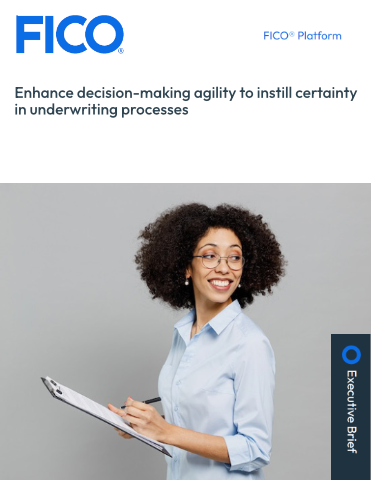Embedded insurance: a disruptive force or just another distribution channel?
Can embedded insurance drive genuine change in the insurance sector?

The insurance industry is often seen as a laggard in adopting new technologies and innovating products. While banking and finance – also long criticised for their resistance to change – have embraced digital transformation, insurers have been slower to unlock the value of digital technologies and open data.
Unlike banks that enable API-driven data access for payment service providers, insurance companies remain hamstrung by legacy systems. The traditional insurance model suffers from systemic issues: inflexible product structures, high distribution costs and clunky customer journeys. Policies are typically supply-driven, requiring customers to fit a square peg in a round hole when matching their actual needs with the policies on offer.
According to the FCA, customer acquisition still accounted for 29 per cent of home insurance costs in 2019 – with 85 per cent of those costs spent on intermediaries. These acquisition costs are typically baked into premiums, which mostly isn’t communicated to customers transparently.
High premiums and the inability to customise policies to individual needs are then often compounded by laborious and manual underwriting processes and, once damage occurs, impersonal, sluggish claim handling, all of which fail to meet the expectations of clients used to smooth digital customer journeys.
Seeds of disruption
However, while levelling criticism at incumbent insurers for getting stuck in the old rut of how insurance is done, it must also be noted that digitalisation hasn’t left the industry as a whole intact.
Managing general agents (MGAs) – originally intermediaries granted underwriting authority in the early 20th century – have evolved into agile operators integrating cloud platforms, automation and advanced analytics. Their ability to adopt emerging technologies has made MGAs a testing ground for modernising insurance processes.
Some MGAs have even gone fully digital, developing innovative offerings such as parametric insurance, which pays out automatically when predefined conditions are met. While they may appear to compete with traditional insurers, many MGAs actually partner with incumbents to bring innovation into the fold.
Digital insurance development platforms also play a key role, offering modular tools and APIs that streamline operations and enable personalised coverage. These platforms can reduce premiums by leveraging IoT and telematics to build usage-based products that charge only for active coverage – a huge advantage for drivers of ride-hailing firms or seasonal users, for example.
However, despite these advances, digital MGAs and development platforms haven’t yet reached a scale that compels industry-wide transformation.
Insurance at the checkout
Bundling insurance at the point of sale – whether at a store or an online checkout – is not new. From flight and ticket cancellation policies to extended warranties, this approach is now known as embedded insurance.
Embedded insurance benefits all parties: customers get relevant protection with a single click, vendors diversify their services and increase customer retention and insurers dramatically cut acquisition costs. Embedded insurance builds on earlier “affinity distribution” models, where insurers, to extend their customer base, partnered with trusted groups such as trade associations and charities to offer context-specific coverage.
Major players have embraced the current embedded insurance trend. IKEA offers household and liability insurance, INSHUR integrates driver policies into Uber, and Amazon collaborates with Cover Genius to provide damage protection.
While originally tied to specific products, embedded insurance is now expanding as a strategy to increase cover accessibility through non-insurance channels.
The digital backbone behind embedded insurance
The growth of embedded insurance hinges on the digital capabilities of innovative insurers. Their high-volume, low-cost models enable them to offer simple policies at attractive prices, which ensures customers are happy to buy cover at the click of a button.
These providers are also tapping into open banking to access client bank account data through APIs, leveraging it to sharpen risk assessment, personalise products and streamline customer experiences through automation.
Although embedded insurance currently accounts for just 3 to 5 per cent of global gross written premiums (GWP), forecasts suggest it could reach 20 per cent by 2030. Many believe this shift could finally push the insurance sector into a customer-led, digitally driven era.
In this emerging model, traditional insurers pivot to enabling roles, offering white-label products to help non-insurance brands become insurers themselves – ushering in a B4B2C (business-for-business-to-consumer) model.
If this shift takes hold, analysts maintain, it could redefine not just distribution but the entire customer perception of insurance – bringing about an industry-wide shift to a consumer-led market that does away with the old one-size-fits-all approach.
With the current share of embedded insurance in the single digits, it’s too early to say if it will revolutionise the industry, in the way streaming replaced DVDs or booking platforms replaced travel agencies. But it’s clearly part of a broader wave – alongside insurtech and digital platforms – that’s pushing incumbents to reposition themselves on the market and rethink their value propositions.
Most Viewed
Winston House, 3rd Floor, Units 306-309, 2-4 Dollis Park, London, N3 1HF
23-29 Hendon Lane, London, N3 1RT
020 8349 4363
© 2025, Lyonsdown Limited. Business Reporter® is a registered trademark of Lyonsdown Ltd. VAT registration number: 830519543




